
After the Allied failure to capture Arnhem in September 1944, war raged in the south of the Netherlands for months. The western provinces of the country, containing the major population centres of The Hague, Rotterdam, Amsterdam and Utrecht, remained under German occupation and the availability of food quickly became an issue. Areas of the country were deliberately flooded as part of the German defensive effort or were inundated with water due to Allied bombing breaching the country's system of dykes. Prior to Operation Market Garden nearly 30,000 Dutch rail workers had responded to a call to go on strike to hinder the enemy movement of men and materiel, but this also impacted food supplies: the Nazis had already used starvation as a punishment tactic in Eastern Europe, and the flow of food into western Holland dwindled.
The Germans were also stripping the country of food for their own needs. As the Allies gradually advanced through the eastern provinces of the Netherlands, German forces isolated in the west embarked upon a scorched earth policy to deny the Allies access to Dutch ports, mining the waterways and blowing up infrastructure. Soon, in addition to the trials of flood and fire suffered by the civilian population came a new torment: famine.
In general the recommended minimum calorie intake required by a male undertaking moderate activity is between 2,000-2,500 calories per day. After November 1944 the official daily ration in the west of the Netherlands dropped below 750 calories. The winter of 1944-5 was severe and brought more suffering, with people resorting to eating grass and tulip bulbs. Coal supplies were quickly exhausted, and gas and electricity supplies ran out. It was now difficult to cook what little food there was. To conserve energy, people lay down for much of the day and it became commonplace to see people collapse in the street and die.
Denne historien er fra Issue 138-utgaven av History of War.
Start din 7-dagers gratis prøveperiode på Magzter GOLD for å få tilgang til tusenvis av utvalgte premiumhistorier og 9000+ magasiner og aviser.
Allerede abonnent ? Logg på
Denne historien er fra Issue 138-utgaven av History of War.
Start din 7-dagers gratis prøveperiode på Magzter GOLD for å få tilgang til tusenvis av utvalgte premiumhistorier og 9000+ magasiner og aviser.
Allerede abonnent? Logg på

NAUMACHIA TRUTH BEHIND ROME'S GLADIATOR SEA BATTLES
In their quest for evermore novel and bloody entertainment, the Romans staged enormous naval fights on artificial lakes
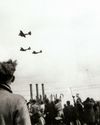
OPERATION MANNA
In late April 1945, millions of Dutch civilians were starving as Nazi retribution for the failed Operation Market Garden cut off supplies. eet as In response, Allied bombers launched a risky mission to air-drop food

GASSING HITLER
Just a month before the end of WWI, the future Fuhrer was blinded by a British shell and invalided away from the frontline. Over a century later, has the artillery brigade that launched the fateful attack finally been identified?
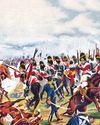
SALAMANCA
After years of largely defensive campaigning, Lieutenant General Arthur Wellesley went on the offensive against a French invasion of Andalusia

HUMBERT 'ROCKY'VERSACE
Early in the Vietnam War, a dedicated US Special Forces officer defied his merciless Viet Cong captors and inspired his fellow POWs to survive
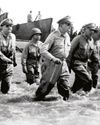
LEYTE 1944 SINKING THE RISING SUN
One of the more difficult island campaigns in WWII's Pacific Theatre saw a brutal months-long fight that exhausted Japan’s military strength

MAD DAWN
How technology transformed strategic thinking and military doctrine from the Cold War to the current day
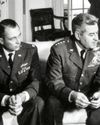
BRUSHES WITH ARMAGEDDON
Humanity came close to self-annihilation with the Cuban Missile Crisis, Broken Arrows’ and other nuclear near misses
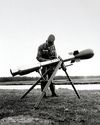
THE DEADLY RACE
How the road to peace led to an arms contest between the USA and USSR, with prototypes, proliferation and the world’s biggest bomb

THE MANHATTAN PROJECT
Einstein, Oppenheimer and the race to beat Hitler to the bomb. How a science project in the desert helped win a war